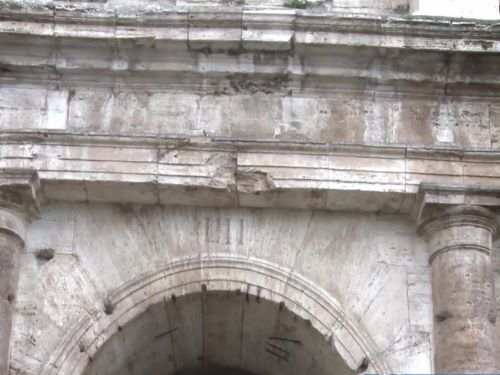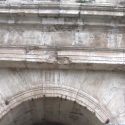The restoration of the Colosseum has revealed that the numbers on the arches were red. It exposed small but unmistakable traces of colour. Thanks to the colouring the numbers were visible from afar. This helped the spectators identify the right entrance among the 76 possible ones. It is incredible to believe: the numbers on the arches of the Colosseum were red!
Come and see with your own eyes the complex numbering of the Colosseum with one of our Colosseum Tours.
THE RESTORATION
The numbers engraved on the arches of the Colosseum were coloured red in order to be visible from afar. This was revealed by the careful restoration of the Colosseum, during which small but unmistakable traces of colour were exposed. When water was sprayed on the facade of the building to remove dirt and smog small traces of colour surprised the operators. The numbers were used to indicate to the spectators the right entrance among the 76 possible entrances to the Colosseum. For this reason the numbers were engraved in the stone and have a height of 34 cm and an average depth of 2 cm. The discovery was made on the facades of the first order of the Colosseum, on the north side. The numbers engraved on the arches of the Colosseum were coloured red in order to be visible from afar.

THE 76 ENTRANCES
Emperors and royalty enjoyed the privilege of private entrances, but over fifty thousand people gathered for each performance had to identify which of the other 76 entrances was theirs. Each person had to queue under the archway displaying the same number as the one on his or her pass.
The colour red facilitated the identification of the archway from afar, as well as being one of the most popular colours in imperial Rome. Maximum visibility was therefore achieved by colouring the groove of each number in red. In addition to this, indications were also written inside the amphitheatre painted on the surface of visible stones.
THE RED COLOUR
The red colouring could last two or three years and then had to be reapplied. Red is a colour derived from iron oxide, which is extracted from clay. For this reason it could only resist for a limited period of time. The ‘rubricatura’ (from ruber, red), is what the Romans called this painting.
Come to Rome and take one of our many Colosseum Tours. We’d be glad to show you the many incredible details of this unique location.

